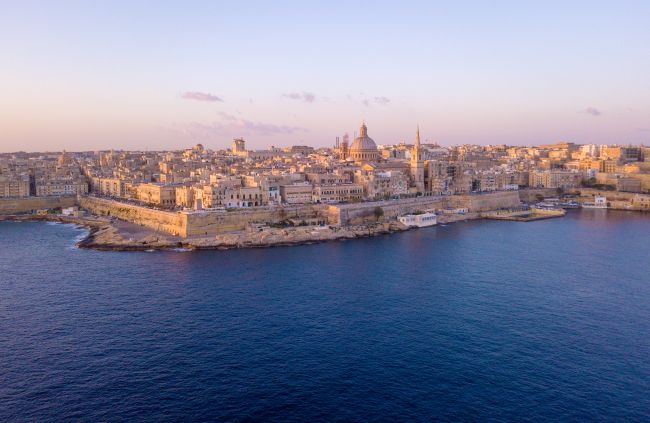| Malta Short Let: Cozy Stay in Gzira | |
|
Sliema Area Modern Designer Finished 2 Bedrooms + Games Room. First floor with Maltese Balcony Large back Terrace with swinging sofa Fully Airconditioned + Full Kitchen 3 TVs, including 65” with backlight. |
 |
|
Book Now: Google Travel | Direct (Cheapest) | Booking.com | Airbnb |
|
Colonial Pressures and the Dawn of Direct Levy
Introduction: A Fortress Island Under Siege
Malta’s strategic role as a British crown colony made it a linchpin in World War I, serving as a naval base, hospital hub, and convoy waypoint. Learn more about Malta’s wartime challenges during this period. German and Austro-Hungarian U-boats sank over 200 Allied merchant vessels in 1917, slashing customs duties—Malta’s economic backbone—by up to 40% [2]. With military costs soaring and civilians facing food shortages, inflation, and epidemics like whooping cough (2,854 cases, 215 deaths in 1917–18), the colonial government faced a fiscal crisis [20].
Traditional indirect taxes on trade were inadequate, prompting new levies on leisure, communications, and inheritance, alongside tightened existing duties. There was no modern income tax—introduced in 1926—nor value-added tax (VAT), which began in 1995 [15]. These measures deepened class divides, burdening middle- and upper-class Maltese amid wartime “hard times.” Post-war, economic discontent fueled the 1919 Sette Giugno riots, catalyzing constitutional reforms and the eventual income tax. For a broader historical context, Malta’s WWI role fits into a long timeline of resilience.
Socio-Economic Context: Wages and Costs
To grasp the tax burden, Malta’s economic realities are summarized below, reflecting a rigid class structure and the island’s economic vulnerabilities. Average annual wages varied sharply, with professionals earning significantly more than laborers, while food and housing costs strained most households.
| Aspect (1917) | Details | Original Amount (£) | Equivalent in 2025 EUR | Notes |
|---|---|---|---|---|
| Wages: Doctor/Lawyer | Professionals serving elite and colonial officials | 200–400 annually | 18,320–36,640 | Trade disruptions cut client base [34][35] |
| Wages: Dock Worker | Unskilled, post-strike wages, up from £45–£50 pre-war | 60–75 annually | 5,496–6,870 | Strikes secured 50% raise [34][35] |
| Wages: Farmer | Reliant on small plots, often bartering crops | 40–55 annually | 3,664–5,038 | Limited cash income; no widespread wealth despite wartime demand [34][35][4] |
| Food Costs | Household of four, staples (bread, macaroni, scarce meat) | 0.50–1.00 weekly | 46–92 | 20–40% of dock worker’s income; bread prices tripled (1d to 3d per loaf) [2] |
| Housing Costs | Urban flat or rural farmhouse | 80–200 (purchase) | 7,328–18,320 | Unaffordable for most without savings [35][4] |
Reference: Galea, M., Malta in the Great War (2014, pp. 89–92); Malta Blue Book, 1917–18 (National Statistics Office, pp. 45–47); Daily Malta Chronicle, September 1917, p. 3; Vassallo History (2013) [34][35][2][4].
Demographic and Lifestyle Context
Wartime conditions shaped Malta’s demographics and lifestyle, with limited access to modern amenities and a focus on survival.
- Average Life Expectancy: Approximately 45–50 years, lower than Britain’s ~55 years, due to malnutrition, overcrowding, and diseases like whooping cough and plague (8 cases, 4 deaths in 1917) [20][37].
- Average Children per Household: 5–6 children, reflecting large families in a Catholic, agrarian society; total household size typically 6–8, including parents and sometimes grandparents, in urban tenements or rural homes [11][38].
- Cars: Fewer than 100 island-wide, introduced in 1904, owned exclusively by the wealthy elite [36].
- Televisions: Nonexistent, as they were not introduced in Malta until 1957; no domestic use in 1917 [36].
- International Travel: Primarily emigration for economic survival, with ~10,000 Maltese leaving for Britain or Australia in 1918–1920, not leisure travel [36].
Reference: Tripp, L., et al., PLOS Global Public Health (2023); Malta Census 1911 (National Statistics Office); Cassar, C., A Concise History of Malta (2000, pp. 156–158); Attard, L., The Great Exodus (1989, p. 22) [20][37][38][36].
This article details fiscal shifts, preserving original amounts in pre-decimal British currency (£1 = 20 shillings = 240 pence) and converting to 2025 euros using a ~91.6x factor [30][26].
Wartime Fiscal Strain: New Taxes to Plug the Gaps (1914–1918)
Malta’s pre-war economy relied on customs revenues, but U-boat disruptions forced emergency measures. By 1917, dockyard employment surged to 14,000, yet wages trailed living costs that tripled since 1914 [2]. To avoid overburdening the poor, the government targeted discretionary spending and wealth, while tightening existing duties [20].
Entertainment Tax: A Penny for the Pictures
Introduced in mid-1917 under Ordinance No. 47, the entertainment tax hit cinemas and theaters, where locals and troops escaped wartime woes. A surcharge of 1d was added to tickets up to 6d, and 2d for pricier seats, at venues like Valletta’s Empire Theatre. Yielding £10,000 annually (€916,000 in 2025), it funded naval repairs but irked middle-class patrons, who called it a “tax on joy” in Daily Malta Chronicle letters [2]. Lax enforcement due to understaffed offices fueled resentment.
| Original Amount (1917) | Equivalent in 2025 GBP | Equivalent in 2025 EUR |
|---|---|---|
| 1d (~£0.004) | ~£0.32 | ~€0.37 |
| 2d (~£0.008) | ~£0.64 | ~€0.73 |
| Annual Yield: £10,000 | ~£800,000 | ~€916,000 |
Reference: Malta Government Gazette, Ordinance No. 47 of 1917; Malta During the Two World Wars (Form 5 History Unit N, p. 3); British Colonial Reports (TNA: CO 158/288) [2][23].
War Tax Stamps: Surcharges on Letters and Parcels
From October 1917, postage stamps bore “war tax” overprints (½d yellow-green and 3d purple-on-red, SG 92–93), adding ½d per letter and, from December 15, a flat 3d on outgoing parcels [8]. This burdened families reliant on remittances or care packages amid shortages of kerosene and paper. Generating £5,000 in its first quarter (~€458,000 today), it eased postal deficits but deepened isolation. Military mail exemptions offered little civilian relief.
| Original Amount (1917) | Equivalent in 2025 GBP | Equivalent in 2025 EUR |
|---|---|---|
| ½d (~£0.002) | ~£0.16 | ~€0.18 |
| 3d (~£0.0125) | ~£1.00 | ~€1.15 |
| Quarterly Yield: £5,000 | ~£400,000 | ~€458,000 |
Reference: Malta Post Office Annual Report, 1917–18 (NSO Malta, Ch. A, p. 12); Gibbons British Commonwealth Stamp Catalogue (2023 ed.); Government Notice No. 512, Gazette, October 12, 1917 [8].
Succession and Donation Duties Act: Taxing Wealth in Crisis
The cornerstone of wartime fiscal reform, the Succession and Donation Duties Act (Ordinance No. 15 of 1918), effective April 1, 1918, but announced in late 1917, introduced Malta’s first direct taxes on estates and gifts, replacing ad hoc probate fees [4]. Rates ranged from 1% on estates up to £1,000 (exempting small farms) to 10% on portions above £50,000, with matching duties on lifetime donations. Spousal and charitable transfers were exempt, but merchants, professionals, and landowners faced heavy burdens. Aimed at recovering £200,000+ in lost customs (~€18.3 million today), it raised £80,000 annually (€7.33 million in 2025). The Legislative Council decried it as eroding “family wealth in these hard times,” foreshadowing unrest [4].
| Original Amount (1918) | Rate | Equivalent in 2025 GBP | Equivalent in 2025 EUR |
|---|---|---|---|
| Up to £1,000 | 1% | ~£80,000 | ~€91,600 |
| Over £50,000 | 10% | ~£4,000,000 | ~€4.58 million |
| Annual Yield: £80,000 | – | ~£6.4 million | ~€7.33 million |
Reference: Succession and Donation Duties Act, 1918 (Malta Laws, Vol. 8, Cap. 285); Fenech, A., The Introduction of Death and Donation Duties and Income Tax in Malta (University of Malta Thesis, 2014, pp. 45–67); Daily Malta Chronicle, November 1917, p. 4 [4].
Secondary Taxes: Customs, Stamps, and Port Dues
Existing indirect taxes were tightened to offset customs losses. Customs and excise duties on imports (e.g., wheat, tobacco, spirits) remained the largest revenue source, yielding £100,000 in 1917 (€9.16 million today), despite U-boat disruptions. Stamp duties on legal documents (1s–5s) generated £2,000 (€183,200), targeting professionals. Port dues (1s per ton) on ships at Grand Harbour added £5,000 (€458,000), indirectly raising import costs [35][23].
| Tax Type (1917) | Description | Rate | Annual Yield (£) | Equivalent in 2025 EUR |
|---|---|---|---|---|
| Customs/Excise Duties | Taxes on imports (wheat, tobacco, spirits) | Variable (e.g., 2s–5s per unit) | ~100,000 | ~9,160,000 |
| Stamp Duties | Fees on legal documents (leases, contracts) | 1s–5s per document | ~2,000 | ~183,200 |
| Port Dues | Fees on ships at Grand Harbour | 1s per ton | ~5,000 | ~458,000 |
Reference: Malta Blue Book, 1917–18 (National Statistics Office, p. 50); Colonial Office Reports (TNA: CO 158/288) [35][23].
Post-War Reckoning: Riots, Reforms, and Income Tax (1919–1926)
The Armistice of November 1918 brought no immediate relief. Demobilization flooded Malta with unemployed workers, while U-boat disruptions kept food imports scarce, with bread prices nearly tripled since 1914 [2]. Farmers saw no lasting wealth; despite temporary demand from 130,000 wounded troops in Malta’s hospitals (1915–16), inflation, crop damage, and labor shortages limited gains, driving 10,000 to emigrate by 1920 [17][36][4]. The Sette Giugno riots of June 7–8, 1919, were sparked by economic hardship, unemployment, food shortages, and tax grievances, as protesters stormed the Legislative Assembly demanding self-rule [2]. Succession duties, seen as colonial overreach, fueled middle-class anger, while working-class frustrations over inflation and joblessness boiled over, resulting in four deaths when British troops fired on crowds [14]. British grants of ~£450,000 annually (€41.2 million today) propped up the economy, but calls for fiscal autonomy intensified.
The 1921 Constitution granted partial self-government, setting the stage for fiscal modernization. In 1926, the Income Tax Ordinance introduced Malta’s first progressive income tax: 3s 6d per £ (17.5%) on earned income above a £300 exemption, and 5s (25%) on unearned income [15]. Yielding £150,000 initially (€13.7 million today), it targeted professionals and investors, funding projects like the Marsa Industrial Estate. Evasion was rife among the gentry, but it marked a shift toward sustainable revenue.
| Original Amount (1926) | Rate | Equivalent in 2025 GBP | Equivalent in 2025 EUR |
|---|---|---|---|
| Exemption Threshold: £300 | – | ~£24,000 | ~€27,500 |
| Earned Income Over: £300 | 17.5% | Scaled from ~£24,000 | Scaled from ~€27,500 |
| Initial Yield: £150,000 | – | ~£12 million | ~€13.7 million |
Reference: Income Tax Ordinance, 1926 (Malta Laws, Vol. 9); Blouet, B.W., The Story of Malta (1967, pp. 189–195); Colonial Office Annual Report, 1919 (TNA: CO 158/289) [15][14].
Legacy: From Wartime Burden to Fiscal Foundation
The wartime taxes of 1917–1918 transformed Malta’s fiscal landscape, shifting from indirect customs to direct levies like succession duties, paving the way for the 1926 income tax, which evolved into today’s 35% corporate rate with shareholder refunds [15]. The Sette Giugno riots, driven by economic hardship, unemployment, food shortages, and tax grievances, underscored the limits of colonial fiscal policy, catalyzing self-government and independence in 1964. By 2014, Malta’s tax revenue reached €2.747 billion (34.6% of GDP), a far cry from the penny surcharges of 1917 [0]. As historian Fenech notes, these measures were “revolutionary,” ending an era where the British taxpayer bore Malta’s fiscal burdens alone [1][10].
Lessons for Today: Malta’s Past as a Guide for Modern Policy
Malta’s fiscal journey during and after World War I reveals recurring patterns that echo today. While the numbers have grown and the context has evolved, the underlying dynamics of taxation, resilience, and governance remain relevant. By examining how Malta navigated those turbulent years, modern policymakers can draw valuable insights.
- Diversify Revenue Streams: In 1917, Malta’s reliance on customs duties left it vulnerable when U-boat attacks cut trade, prompting new taxes [2]. Today, Malta depends on tourism (13% of GDP) and corporate taxes. A global recession or corporate relocation could disrupt this, suggesting a need for green energy taxes or digital services levies to spread fiscal reliance [0][15].
- Crises as Catalysts for Change: Wartime necessity drove direct taxation and the 1926 income tax [4][15]. The burden on business and population was immense. Modern crises— ai, war, technological disruption, or inflation—require proactive reforms, to pre-position the right incentives for resilience and competitivity on the world stage.
- Migration: Past Lessons, Present Limits: Emigration (~10,000 by 1920) eased WWI pressures but depleted talent [36]. Modern two-way migration requires education and job investments to retain talent, unlike 1919’s one-way exodus [17].
These lessons, rooted in Malta’s WWI experience, highlight the need for resilient, equitable, and transparent fiscal systems. Explore economic resilience strategies for further insights into Malta’s adaptive policies.
References
[0] European Commission, Taxation Trends in the European Union (2014, Malta data, p. 154).
[1] Fenech, A., The Introduction of Death and Donation Duties and Income Tax in Malta (University of Malta Thesis, 2014).
[2] Malta During the Two World Wars (Form 5 History Unit N, p. 3); Daily Malta Chronicle, September–November 1917.
[4] Vassallo History (2013), vassallohistory.wordpress.com.
[7] Malta Property Price Index (2024), National Statistics Office Malta.
[8] Malta Post Office Annual Report, 1917–18 (NSO Malta, Ch. A, p. 12); Gibbons British Commonwealth Stamp Catalogue (2023 ed.).
[10] Blouet, B.W., The Story of Malta (1967, pp. 189–195).
[11] Malta Census 1911 (National Statistics Office).
[14] Colonial Office Annual Report, 1919 (TNA: CO 158/289).
[15] Income Tax Ordinance, 1926 (Malta Laws, Vol. 9); Malta Tax System Overview (PwC, 2023).
[17] Explore Malta’s War History, cwgc.org (2022).
[20] Tripp, L., et al., “The emergence of a suburban penalty during the 1918/19 influenza pandemic in Malta,” PLOS Global Public Health (2023).
[23] Colonial Office Reports (TNA: CO 158/288, 1917 fiscal despatches).
[26] Bank of England Inflation Calculator (accessed 2025).
[30] GBP/EUR exchange rate, ~1.145 (September 2025 estimate).
[34] Galea, M., Malta in the Great War (2014, pp. 89–92).
[35] Malta Blue Book, 1917–18 (National Statistics Office, pp. 45–50).
[36] Attard, L., The Great Exodus: Maltese Emigration 1918–1939 (PEG Publications, 1989, p. 22).
[37] Malta Census 1911 (National Statistics Office); Cassar, C., A Concise History of Malta (2000, pp. 156–158).
[38] Cassar, C., Society, Culture and Identity in Early Modern Malta (2000, p. 112).








